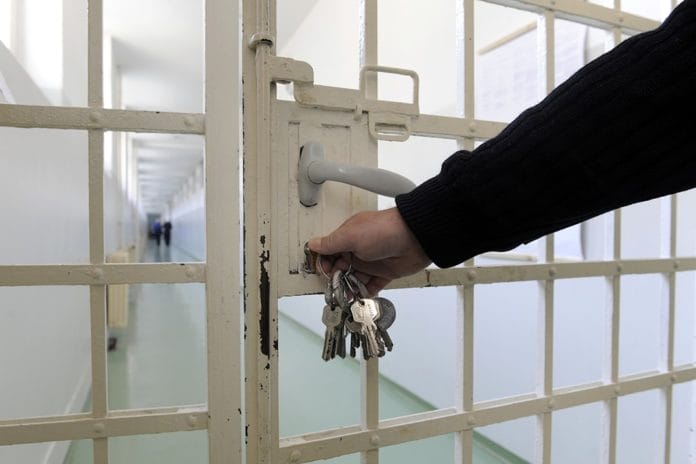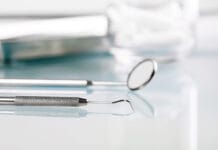When we first entered dental hygiene school, we were taught that as dental hygienists, we perform many different roles, such as clinician, advocate, researcher, educator, and administrative/manager.
Some of us work in different types of dental offices, including private practices, general, perio, and pedo to name a few, while others work in the public health sector. Some hygienists have switched paths and have moved into administrative roles, work as dental manufacturer representatives, or educate future hygienists.
There are a variety of clinical settings that dental professionals work in, and not all clinicians work in private practices. Some work in mobile vans to bring dental care to underserved communities, work in a prison setting, or travel to different school districts to place sealants in state-based sealant programs.
I wanted to learn more about other hygienists’ work settings. To accomplish this, I contacted a few dental hygienists in my state to interview them about their dental hygiene careers and how they got to where they are now. One of the first hygienists on my list was Amanda Berthiaume, RDH, MS, who works with a very unique population − inmates.
Community Health Center and Jail Setting
Amanda is employed by a federally qualified community health center. Additionally, she also is employed at the local jail. Amanda is still in a clinical setting, but a very unique one at that. I definitely wanted to learn more about the day-to-day operation in this type of setting.
Kaitlyn: How many years have you been a hygienist? How long have you been at your present job?
Amanda: I graduated in 2015 from Springfield Technical Community College in Springfield, Massachusetts. I have been at the community health center for two years and adjunct faculty for three years.
Kaitlyn: What do you do in this work setting? Job tasks? Treatments or procedures? Education?
Amanda: For the health center, I work as a clinical hygienist in their Main Street location and at the county jail. Job tasks are the same at both locations, with one having more security measures. I perform a lot of non-surgical periodontal therapy and oral health education in several languages. I have access to an interpreter service, which is amazing.
A typical day is performing a variety of patient education, prophylaxes, non-surgical periodontal therapy, taking radiographs, and all other typical dental hygienist functions.
In the jail, I must be creative with patient education and dental hygiene recommendations due to the lack of access to dental products or costs through the commissary. I find that the inmate patients are willing to listen and absorb the OHI, maybe because they are in a place in life trying to change and rehabilitate, or maybe it reminds them of life outside of the jail.
They do not have access to traditional string floss, so we show them how to use small bands that resemble ortho bands for interdental cleaning. One of the most memorable moments I’ve had was talking about sensitivity toothpaste, and the inmate patient told me that he had recently won sensitivity toothpaste playing cards. Dental products are a hot commodity.
Kaitlyn: How did you get to this position?
Amanda: I applied for this position through a job search engine, and the dental director said she loved how passionate I was about dental hygiene and hired me. When the health center acquired the contract for the jail, I was excited to expand into a different setting. I felt that if I could help improve the oral and overall health of the inmate patients in their greatest time of need, it might help their reflection and rehabilitation process.
I predominantly have patients who experience several barriers to care, such as transportation issues, little to no English skills, complicated medical, mental, and social histories, and are at a low socioeconomic level. Many patients, no matter their age, have never been to the dentist, so I am their first dental experience.
It is a very fulfilling job. At the end of every day, even the hard ones, I feel fulfilled knowing that I have helped patients who are truly in need. I get a lot of hugs and blessings because they aren’t scared of the dentist anymore.
Kaitlyn: Why did you decide to work in this setting?
Amanda: I was studying for my master’s degree at one of the local universities and was learning a lot of public health information. At the time, I was in private practice but I really wanted to work with the underserved population I was learning about. I started at the health center and absolutely loved the feeling of working with a population that really needs preventive education.
Kaitlyn: What are some things you would like others to know about hygienists in this specific work setting?
Amanda: I wish that there were more opportunities for dental hygienists and student dental hygienists to be exposed to the jail setting. There are a lot of opportunities to prevent disease and promote prevention to this captive audience that will eventually be released. There are also several school loan forgiveness opportunities for working in this type of public health setting that could help dental hygienists in continuing their education.
I get a lot of questions about my safety from students and hygienists. Before starting at the jail, all employees undergo special training by correctional officers in how to act and talk to the inmates. They focus on safety and understanding the jail’s functions and protocols. This helps prepare you for knowing how to respond to hostile or emergency situations. At all times, I carry a device that, if I feel like I am in danger, I can activate, and officers would come to my location immediately. I was trained in trying to anticipate or recognize these situations before they escalate.
Kaitlyn: How is this work setting different than other settings in the dental hygiene profession?
Amanda: This work setting is different than other work settings due to the correctional environment and special precautions that need to be taken. For instance, I cannot leave the inmate patients in the room alone, and we have to count every instrument before and after every patient to ensure no objects were taken that could be used to harm themselves or anyone else. I also think putting aside why the patient/inmate might be in there and focusing on their oral and systemic health can be hard.
The inmate patients receive both emergency and preventive care. First, they are examined by the dentist and given a full treatment plan. When they arrive at their hygiene appointment, their periodontal evaluation has already been completed by the dentist, and I am either performing a prophy, debridement, or non-surgical periodontal therapy, depending on the dentist’s diagnosis.
Although the process of calling an inmate down to the dental area may take some time and may require stopping all movement in the building for safety reasons, once in my chair, I am not limited by time. I complete my treatment plan, including reviewing the medical chart, blood pressure, intra- and extraoral evaluation, scaling, polishing, flossing, fluoride, and OHI. If they need to return to complete treatment or reevaluation, I put them back into the schedule.
I only wish there was more space in the dental department. There are currently only two operatories, so hygiene is not offered every day to allow the dentist access to two chairs. I know there are budget and space considerations, but expanding hygiene could help prevent dental and systemic emergencies and possibly help lower the cost to the state both when incarcerated and released.
Kaitlyn: Are there any specific requirements needed to work in this specific setting?
Amanda: There is no specific requirement for working in the jail setting, but I think having a public health background and education is helpful. The jail does a great job of training you prior to working on the inmate patients.
Kaitlyn: Are there any other comments or info you would like to add regarding your dental hygiene career or job position?
Amanda: The pay with benefits at the jail and health center is higher than I typically see in private practice. Benefits include paid vacation, sick time, personal time, 12 paid holidays, floating holiday, paid continuing education courses, matching retirement contributions, and medical and dental insurance.
In Closing
A community health or jail setting are only a couple examples of the many setting types a hygienist can work. A big thank you goes to Amanda for taking the time to share her career path!
Before you leave, check out the Today’s RDH self-study CE courses. All courses are peer-reviewed and non-sponsored to focus solely on pure education. Click here now.












